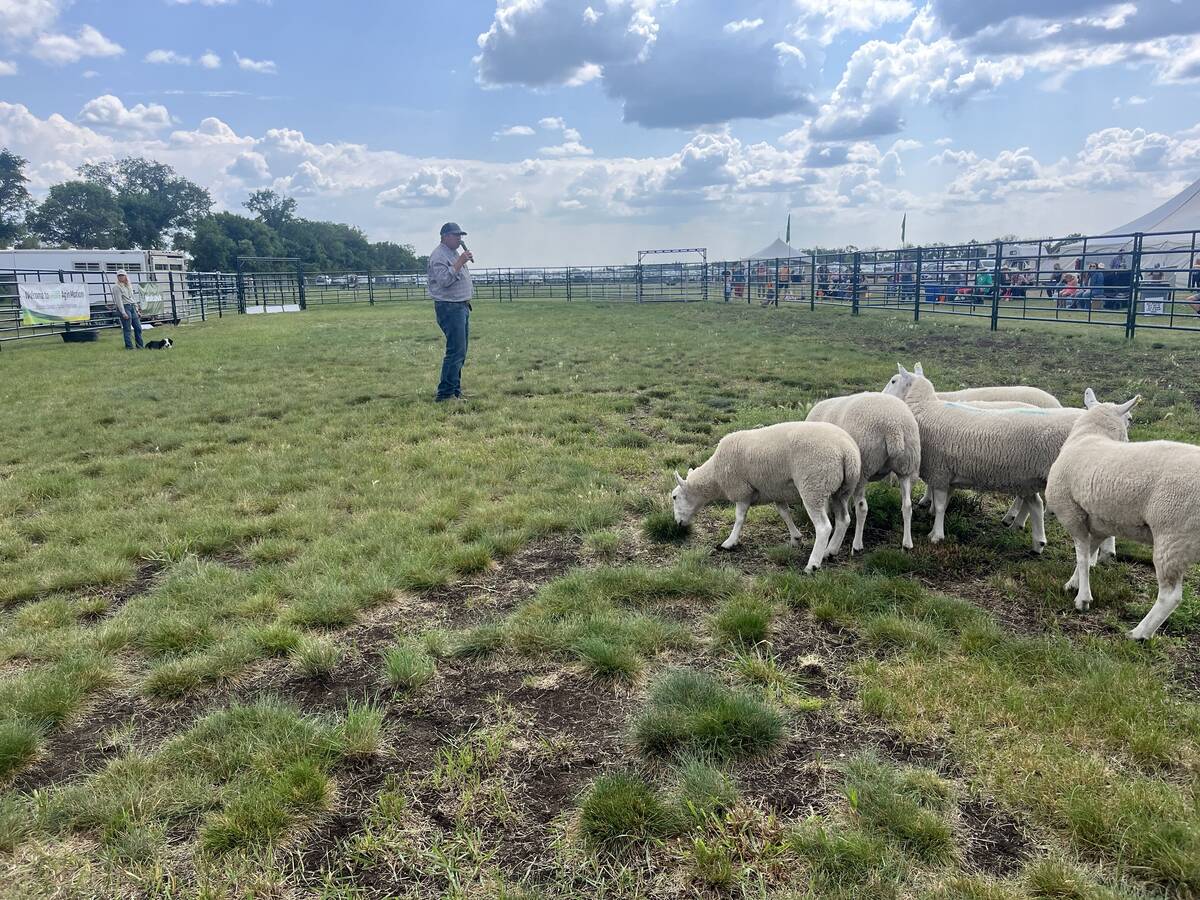SAN ANTONIO, TEXAS – American cattle producers want a new approach to trade negotiations after seven years of frustration in regaining full market access.
“I am not sure we have another seven years or deep enough pockets to deal with this whole quagmire,” said Montana rancher Jim Peterson, chair of the United States Meat Export Federation.
He was part of an industry-government task force talking at the National Cattlemen’s Beef Association meeting in San Antonio late last month about how to get full access to countries such as Japan where only beef from cattle younger than 21 months is accepted.
Read Also

Stock dogs show off herding skills at Ag in Motion
Stock dogs draw a crowd at Ag in Motion. Border collies and other herding breeds are well known for the work they do on the farm.
The Japanese market was worth $1.2 billion US in 2002 before BSE was discovered. It would be worth $1.4 billion if Japan would accept beef from cattle younger than 30 months.
Other countries such as South Korea and Taiwan continue to find ways to prevent imports, so a new approach is needed, Peterson said.
He said an incremental approach to regaining market access might be better after seven years of struggling. In 2004, the industry thought an all-or-nothing approach would reopen markets in a year’s time.
Peterson said the industry should have asked its trading partners what they wanted rather than insisting on full access.
“I do not see a reason to use the all-or-nothing approach in gaining market access to any particular country,” he said.
“The reality is obvious we couldn’t afford to lose all our exports waiting for full access.”
A coalition of meat partners is necessary, he added, because pork and chicken have also been banned from key markets.
Some Asian markets rejected U.S. pork because of concerns over H1N1 influenza and Russia banned poultry because it does not want chicken washed in chlorinated water.
The U.S. wants access based on World Organization for Animal Health (OIE) guidelines that say all beef is safe as long as certain precautions are taken with animal feed and meat processing.
U.S. agriculture secretary Tom Vilsack travels to Japan in April to see if he can break the impasse.
Michael Scuse, deputy undersecretary for farm and foreign agricultural services at the U.S. Department of Agriculture, promised BSE remains a critical issue.
“We have the best product anywhere in the world and we want to do what we can to open up those markets so the rest of the world can recognize just how great American beef actually is,” he said.
The Americans regained access to South Korea last year amidst consumer controversy, but exports have not improved as they hoped. Canada is still banned and has filed a WTO challenge for full OIE access.
“If Canada wins, we win,” said NCBA economist Greg Doud.
Jonghyun Choi, minister for economic affairs at the South Korean embassy in Washington, said the situation would improve if the U.S. ratified the trade agreement it signed with South Korea.
“Unfortunately, almost three years have passed and it still awaits action by the U.S. Congress.
“The stakes for both our countries are high and time is running out,” he said.
“Failure to implement an agreement will be a missed opportunity for the U.S. beef industry to get out of the hardship of the economic crisis.”
If the agreement is ratified, total U.S. exports to South Korea would increase to $10 billion annually.
Tariffs on beef and other agricultural products such as cotton, wine and vegetables would disappear over 15 years.
A similar agreement is underway with Australia, which wants the same deal granted to the U.S.
South Korean beef producers oppose the agreement because they fear they cannot compete with cheaper imports. In exchange, the government has agreed to help farmers affected by the agreement.

















